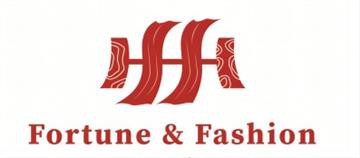What is the general needlework of embroidery
Apr 19, 2023
overview
Category: Random stitch, Direct stitch, Plate stitch, Set stitch, Harmony stitch, Strive stitch, Flat stitch, Scattered wrong stitch, Knitting stitch, Applied stitch, Auxiliary stitch, Variant stitch
Disorderly needle
The random needle embroidery method mainly converts traditional manual embroidery into machine computer embroidery. This embroidery method is improved on the basis of manual embroidery, enhancing the three-dimensional sense of the picture and enhancing the visual impact of the viewer. This embroidery is represented by the Defeng embroidery of the Defeng brand.
Straight needle
Embroidery
Completely embroidered into a shape using vertical lines, with all the rising and falling needles on the edges, all arranged in parallel, and the edges neat. Color matching is a unit with one color line, without any color matching. If the stitches were too long, they were sewn together, which later evolved into a method of laying and carving stitches.
Disc needle
The needle technique used to represent curved shapes. Including four types: cutting needle, connecting needle, rolling needle, and rotating needle. Among them, cutting needles were the earliest and later developed into rotary needles.
Trocar needle
It began in the Tang Dynasty and became popular in the Song Dynasty. It further developed during the Ming Dynasty when Lu Xiang Yuan Gu Embroidery and the Qing Dynasty when Shen Shou were introduced.
Single set: also known as flat set. The embroidery method is as follows: the first batch starts from the edge, with neat edges and openings; The second batch of needles falls in the middle of the first batch, and a small gap needs to be left in the first batch to accommodate the needles of the second batch; The third batch needs to be transferred to the last one centimeter of the first batch, leaving a gap for the fourth batch of needles afterwards; The fourth batch is connected to the last one percent of the second batch; Afterwards, and so on.
"Harmony needle"
It is called a long and short needle. This type of stitch is a combination of long and short stitches that are used interchangeably. The back stitch is inserted from the middle of the front stitch, with uneven edges and a smooth color scheme, which can be used to embroider a simulated image.
Grab a needle
Also known as banjo needle, it is a needle technique that uses a short straight needle to follow the posture of the body, followed by the previous needle, and snatched up in batches. It can be said that this acupuncture method is the development of straight needles.
plain
It is an embroidery method that uses gold and silver thread instead of silk thread. The method is to first use gold or silver thread to lay it flat on the embroidery floor, and then tie it with a short silk thread needle. Each stitch is spaced one to one and a half apart, and it is filled in according to the embroidered pattern. There are two or three rows, as well as multiple rows. The thread should be aligned with the flower like a cross pattern, just like the sole pattern.
Scattered needle
It uses various needlework variations to achieve a moderate intensity of yin and yang, striving for a realistic embroidered form.
Loose needle: It is a mixed needle method used for covering needles, applying needles, connecting needles, and both long and short needles.
Embroidery
It is an embroidery method similar to weaving. It includes poking yarn, dotting, velvet, mesh embroidery, brocade, cross peach blossom, velvet embroidery, etc. These stitches are suitable for embroidering patterns and patterns, so they can also be referred to as "pattern embroidery".
Rao embroidery
It is a type of needlework where needles and threads are intertwined and stitched together to form embroidery. Seeding, locking, embroidery, braiding, and feather needles all belong to this category. Seeding: It is one of the traditional needle techniques in Suzhou embroidery. You can use it to embroider flower stamens or independently embroider patterns and paintings.
Needling
It is the needle technique added to his needle. This acupuncture method requires sparse but not dense, uneven but not merged, active but not stagnant, and uneven and uneven.
Auxiliary needle
This type of stitch is not an independent embroidery technique, but an auxiliary stitch used to enhance the similarity of the embroidered scenery and the vividness of the expression. The needle techniques classified in this category include auxiliary needles, pricking needles, carving needles, etc.
Variant embroidery
In embroidery, there are some special embroidery methods that use other tools, materials, and techniques to make changes to conventional embroidery, namely variant embroidery, including dyeing embroidery, patchwork embroidery, borrowing color embroidery, high embroidery, silk picking, and velvet cutting. Dyed embroidery: In the Yuan Dynasty embroidery, characters, flowers, and birds were often depicted with ink, and paintings were used instead of embroidery. The method of dyeing embroidery started here and is still in use today.






